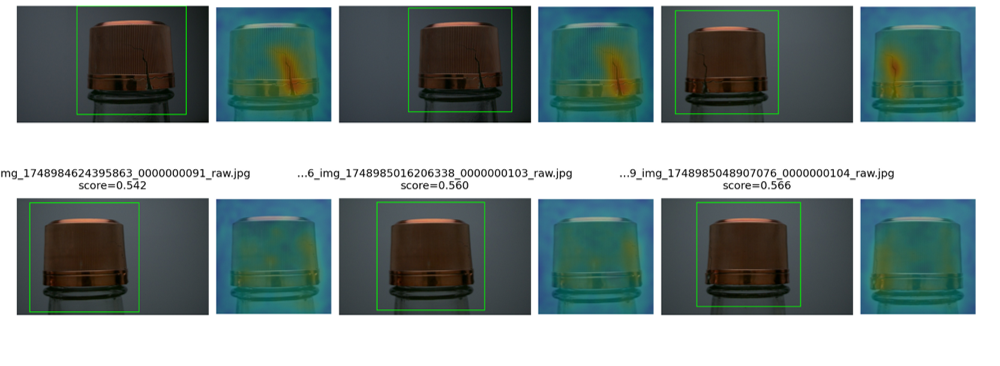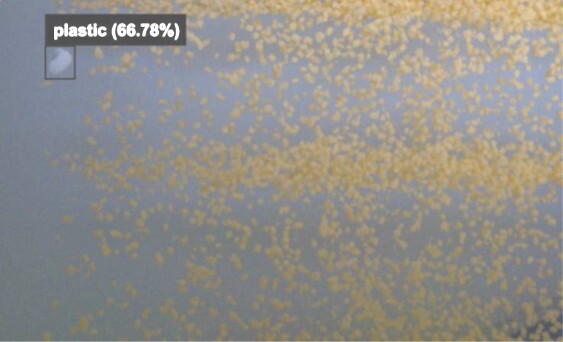Solutions
Agentic AI Smart Machines
Machines That Tell Operators How To Maximize Productivity
One of the biggest challenges with traditional vision inspection machines is that they require a material amount of training in order to use well and even then operators need access to correct SOPs to address whole line efficiency.
Consider this example. If the bottle coding starts to drift and to become almost illegible on bottles but the operator just checked the operation of the coder. In the normal world, the line would probably come to a stop while the operators diagnose and address the problem.
Here is the magic that the Cisek Inspections Smart Machine brings to the plant:
- AI system flags a warning that bottle coding is approaching the limit of what is acceptable due a root cause of excessive bottle lubrication (water) on the bottles at the time of coding.
- The CIS agentic AI system presents the specific SOP to address the excessive lubrication, the operator checks the steps followed in the SOP and the line stays running with no downtime. The CIS agentic AI system constantly optimizes inspection related SOPs to ensure high impact with minimal outliers.
- For complex SOPs that require specific personnel, the system can automatically inform those people (for example blow molder failure recovery) to minimize response time.
Closure Inspection
Exceptionally Precise Cap Inspection
With No Tradeoffs
Like all CIS vision inspection solutions, our Cap inspection solution features smart AI technology is exceptional at dealing with normal product variance and therefore allowing customers to get the absolute highest level of inspection performance. that knows its application!. Simply turn on the cap inspector and go attend to other tasks in your plant!
Depending on application, customers can choose from 3, 4, 5 and 6 camera systems with a current maximum speed of 10 bottles per second (customers with higher speed needs are encouraged to contact Cisek inspections on high speed solutions). Typical false reject rates are 0.005% - meaning that operators don't need to invest material manual labor in sorting through false rejects and making machine adjustments.
Precisely Decision By Defect Type
Our cap inspection solution will automatically find (and classify) the following defects:
- Scratches
- Cocked Caps
- Split Cap
- Split Tamper Band
- Broken or Missing Tamper Band
- Finish and Color Variation Measurement
- High Cap, Low Cap and Estimated Cap Torque
Operators can set a threshold for each defect class to ensure reliable defect ejection while consistently passing those caps that meet usable criteria. The approach ensures bad caps are ejected with immense control over traditionally hard properties like cap color.
Exceptional Simple Operations
Cisek Inspections Smart AI software automatically makes continuous optimizations to deliver 100% hands free inspection - operators only need to make adjustments to the defect classification thresholds (if necessary). Experience automatic changeovers and complete automatic inspection operations.
Cisek Inspections cap inspectors use simple lighting with no strobing (eliminating a timing dependency inherent in other designs). Light strobing can also pose risks to operators with specific medical conditions.
Inspect Caps At the Point of Manufacture
One of the true values of the Cisek Inspections vision inspection architecture is that users can execute the same inspection process at various points in the supply chain (and hence remove defects as early as possible from the supply chain). Leveraging the same exact inspection criteria at cap manufacture as bottle capping also ensures consistency in cap quality.
Improve Your Process Yield
Perhaps the greatest insight that the team at Cisek Inspections has developed on its AI classification approach to cap inspection is that classification data can be used for actionable process improvement. Just ejecting raw cap defects isn't helping understand root cause - and any ejections that happen on the production line are expensive as a complete bottle is often scrapped. Root cause assessment allows elimination of defects, which improves process yield.

Fill Inspection
Simple and Accurate Fill Level Inspection No Matter What Your Product
CIS AI Fill Level measurement ensures that you get accurate fill level measurement regardless of the type of container or nature of the product. The difference is smart AI models that simplify the task of measuring accurate fill level regardless of bottle skew, product bubbling or other typical frustrations. Simply set your upper and lower fill level cutoffs and forget it.
Efficiency Improvement Note: Many customers ignore the cost of overfills when looking at their production efficiency. This approach can cost serious money. The CIS fill level management system will accurately calculate how much product is given away by volume and when equipped with filler instrumentation, the system analytics will tell your maintenance team which fill heads are responsible for the giveaway.

Sampling, Capper and Filler Management
Look Across Your Entire Plant and Focus on Pressing Maintenance Needs
Sample systems as well as filler and capper monitoring software are well established beverage quality management systems. Traditional systems tend to work well and provide basic information for each line (e.g. is there a misbehaving capper or filler head). What these systems don’t do is provide the plant management team with the right information to accomplish plant wide maintenance with immediate customizable alerting for problem capper heads or filler ports.
Label Inspection
Flawless Labels, Every Time.
Labels are another high variance aspect of food and beverage packaging that are often difficult to inspect and thus are typically inspected under low sensitivity to reduce false rejects. This approach makes it very hard to detect critical defects (and why so many products are shipped with labeling errors). Product setup times can also be
CIS provides seamless beverage and package Label Inspection – In Formfactors That Work in Your Plant
The CIS label inspection solution is small enough to go where you need it – many of our customers actually put them inside their labelers but powerful enough to ensure that your labelling requirements are always precisely met.
Our label inspection solution will automatically find (and classify) the following defects:
- Label Placement
- Multiple Label Detection (on same bottle)
- Label placement (presence, too high, too low, too close together, skew)
- Scratched label
- Torn label
- Wrinkled label
- Label lifting/flagging/flapping
- Neck collars stuck behind the label (if applicable)
- Label Content Validation
- Incorrect/obsolete label (Graphics and Text Validation)
- Label color, including ink, foil, and paper
- Label dimensions
- Label print quality (smudges/marks, faded/bold print)
- Label ink/foil registration
Similar to the CIS cap inspection solution, our label inspector allows operators to implement inspection rules by label attribute or defect classification. This approach minimizes the ejection of suitable labels and can easily be modified on the fly to address operation changes in label quality that are permissible.
Code Validation
Hassle Free Automatic Coding Validation
Current code inspection systems often do a very good job of detecting code presence - which is a necessary but not always sufficient condition for proper coding! Thorough coding inspection requires code validation to ensure that the right coding is on the package or bottle. CIS uses AI OCR code validation with direct connection to your ERP or MES system to read the desired target coding rules. This fully automated approach ensures that the validation system understands what coding is valid for the current batch and verifies that a READABLE version of that code is applied.
Beverage Floater Detection
Finally a Robust Way to Detect Floaters in Bottles
Floating foreign bodies in beverages have traditionally been nearly impossible to detect in beverages. Historical solutions offered less than stellar detection rates with very high false reject rates. CIS AI floater detection with enhanced imaging technology ensures that any floater (including insects and plastics) is reliably detected at exceptionally low false reject rates. Our solution works on both clear and semi-opaque containers.
Foreign Material Inspection
Incredibly Low-Density FM Detection in Line-of-Sight Applications
Using RGB or SWIR Imaging Technology
Detect Mold, Plastic and Other Low Density Foreign Material in Either Surface or Monolayered Waterfall Applications
Image:
- Shredded and Diced Cheese Detection
- Block Cheese Inspection
- Blue Cheese Block Detection
Historically detecting surface or low-density foreign material in cheese or protein applications has required a combination of a lot of patience and in some cases bulky color sorting technology. CIS AI technology makes detecting these small low density contaminants easy. Our AI models constantly adapt the inspection parameters to the product - for example if your line runs both diced and shredded cheese, there is no need to change recipes - the system automatically adjusts to whatever product is being inspected.
Other Uses:
- Detecting the wrong color cheese in a homogeneous cheese
- Estimating the blend breakdown of different types of cheese within a cheese mixture
- Detecting even the slightest traces of mold in block or free form bulk cheese.


